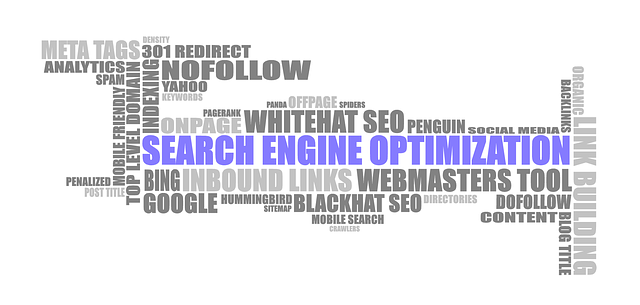HTTPS encryption bolsters internet security, privacy, and SEO by encrypting data transfer, acting as a critical ranking factor for search engines like Google. Core Web Vitals (LCP, FID, CLS) optimization is key to enhancing website performance, user experience, and SEO rankings. Interactive features and mobile-first indexing further improve engagement, load times, and visual stability. HTTPS contributes significantly to these areas, ensuring faster speeds, enhanced security, and increased trust, all vital for modern SEO success.
In today’s digital landscape, HTTPS serves as a cornerstone for secure online interactions. This article explores how HTTPS impacts search engine optimization (SEO), delving into critical strategies for maximizing your site’s potential. We’ll dissect essential elements like Core Web Vitals Optimization, page load speed enhancements, interactive user engagement, mobile-first indexing, and the role of security in building trust with search engines. By implementing these HTTPS SEO strategies, you can elevate your website’s visibility and user experience.
Understanding HTTPS and Its Impact on SEO

HTTPS, or Hypertext Transfer Protocol Secure, is an enhanced version of HTTP that adds a layer of security to internet communication. It encrypts data transfer between a website and its users, ensuring privacy and data integrity. This protocol has become increasingly important not only for user privacy but also as a significant ranking factor in search engine optimization (SEO). Google, in particular, has made it clear that HTTPS is a positive signal in their ranking algorithms, especially when it comes to Core Web Vitals Optimization.
By implementing HTTPS, websites can improve their visibility and performance on search engines like Google. It helps establish trust with visitors, which is essential for retaining users and encouraging engagement. Moreover, secure sites often load faster, have lower bounce rates, and perform better in terms of other Core Web Vitals, all of which contribute to improved SEO rankings. This shift towards HTTPS is a crucial step for businesses to enhance their online presence and keep up with the evolving digital landscape.
Core Web Vitals: A Deep Dive into Page Experience Metrics

The Core Web Vitals represent a set of metrics that delve into page experience, offering insights crucial for optimizing website performance and user satisfaction. These vitals include Largest Contentful Paint (LCP), First Input Delay (FID), and Cumulative Layout Shift (CLS). LCP measures the time it takes for the main content to load, ensuring fast visibility for users. FID focuses on the speed at which a page responds to user interactions, such as clicking or scrolling. CLS tracks sudden changes in the layout, preventing jarring experiences when elements shift unexpectedly.
By prioritizing Core Web Vitals Optimization, website owners can enhance their site’s search engine rankings and improve overall user experience. Search engines like Google use these metrics to gauge a site’s quality and relevance, rewarding well-optimized pages with higher visibility. Thus, focusing on LCP, FID, and CLS not only boosts SEO but also ensures visitors enjoy a smooth, responsive, and visually appealing online journey.
Optimizing for Page Load Speed: Best Practices

In today’s digital era, page load speed is a critical factor for user experience and SEO success. Optimizing your website for faster loading times can significantly enhance your search rankings and drive more traffic. Google prioritizes sites with excellent Core Web Vitals, which include metrics like Largest Contentful Paint (LCP), First Input Delay (FID), and Cumulative Layout Shift (CLS). To improve LCP, ensure your largest images are optimized and delivered via content delivery networks (CDNs). Reducing FID involves minimizing script loading delays, while CLS can be tackled by stabilizing elements on the page to prevent unexpected layout shifts.
Best practices for load speed optimization also include minifying HTML, CSS, and JavaScript files, leveraging browser caching, and utilizing server-side rendering or static site generation where applicable. Additionally, compressing media assets without sacrificing quality and removing unnecessary code or dependencies can further enhance page performance. Regularly testing your website using tools like Google’s PageSpeed Insights will help you identify areas for improvement and keep your site competitive in the search engine results.
Enhancing User Engagement with Interactive Elements

In today’s digital landscape, enhancing user engagement goes beyond just providing valuable content; it involves creating an immersive experience that keeps visitors invested and interacting. Interactive elements like quizzes, polls, and user-generated content play a significant role in this strategy. These features not only break the monotony of static web pages but also encourage active participation, leading to improved user satisfaction and longer dwell times.
Core Web Vitals Optimization is a crucial aspect here, focusing on metrics such as load time, interactivity, and visual stability. By integrating interactive elements strategically, websites can address these vital factors. For instance, dynamic content loading techniques reduce page load times while keeping users engaged. Additionally, smooth animations and responsive designs contribute to a positive user experience, reflecting positively in SEO rankings.
Mobile-First Indexing: Ensuring Full Compatibility

Mobile devices now account for over 50% of all internet traffic, making mobile-first indexing a vital component of HTTPS SEO strategies. Google’s Mobile-First Indexing means that the search engine primarily uses the mobile version of your website for ranking and rendering, regardless of whether a user is on desktop or mobile. To ensure full compatibility, it’s crucial to optimize your site’s speed, usability, and stability on mobile devices. Core Web Vitals play a significant role here; metrics like Largest Contentful Paint (LCP), First Input Delay (FID), and Cumulative Layout Shift (CLS) directly impact user experience on mobile, and consequently, your website’s search rankings.
Focusing on these core optimization areas ensures that your site loads quickly, interacts smoothly, and remains consistent across all devices, providing a seamless experience for users and search engines alike. This, in turn, can lead to improved SEO performance, increased click-through rates, and higher search rankings, ultimately driving more traffic and conversions from mobile users.
Security and SEO: Building Trust with Search Engines

In the digital landscape, security is paramount, and it plays a pivotal role in SEO strategies, particularly when building trust with search engines like Google. HTTPS (Hypertext Transfer Protocol Secure) has become an indispensable tool for websites aiming to enhance their online visibility. By implementing robust encryption, HTTPS safeguards user data, ensuring privacy and fostering confidence. This is especially crucial as search engines prioritize secure sites, often ranking them higher in search results, a testament to their commitment to user safety.
When it comes to Core Web Vitals Optimization, a set of metrics focusing on page load speed, interactivity, and visual stability, HTTPS contributes significantly. A fast-loading, responsive website secured with HTTPS not only provides an enhanced user experience but also signals to search engines that the site is reliable and trustworthy. This can lead to improved rankings and increased organic traffic over time, solidifying the connection between security and SEO success.
